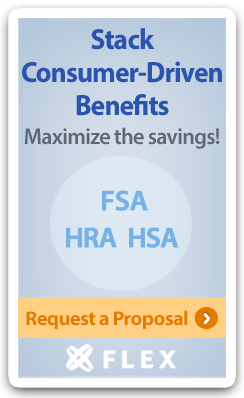Benefits Buzz
The ABCs of Affordable Care Act Reporting

Reporting requirements from the Affordable Care Act (ACA) are rapidly approaching. Health Insurance Marketplaces, health insurance carriers, and employers may be subject to the reporting. The reporting is due February 28, 2023 if filing manually and by March 31, 2023 if filing electronically. Electronic filing is required for entities that are filing 250 or more forms.
Let’s get to the ABCs of the reporting.
Form 1095-A will be completed by Health Insurance Marketplaces. It will be filed with the Internal Revenue Service (IRS), and a copy of the form will be sent to anyone who obtained coverage through a Health Insurance Marketplace in 2022. Form 1095-A provides details about the Advanced Premium Tax Credits (APTCs) that were provided during the 2022 calendar year. This information then must be provided by individuals and families on their personal tax returns. APTCs are provided in advance based on estimated household income for the year, and the APTCs are then reconciled on tax returns based on actual income for the year. Inaccurate estimates could cause a person to have to pay back some of the APTC, or it could cause a person to be entitled to additional APTCs.
Form 1095-B will usually (but not always) be required to be completed by health insurance carriers providing fully insured individual and group health insurance plans. It will be filed with the IRS, and a copy of the form is generally posted online, or a copy of the form is available upon request. Form 1095-B will indicate each month that an individual and their family members were enrolled in minimum essential coverage in 2022. The primary purpose of this form was to help the IRS enforce the federal Individual Mandate (which now has a $0 penalty for being uninsured), but it is also used to help the IRS determine eligibility for APTCs. Enrollment in minimum essential coverage outside of a Health Insurance Marketplace disqualifies a person from being eligible to receive APTCs.
Form 1095-B also needs to be completed by certain employers who aren’t subject to the Employer Mandate (i.e., fewer than 50 full-time equivalent employees). Small employers who offer level-funded health plans or Individual Coverage Health Reimbursement Arrangements (ICHRAs) must complete Form 1095-B or outsource the reporting to another entity to complete it on their behalf.
Entities that are required to file Form 1095-B must also complete one Form 1094-B.
Form 1095-C must be completed by Applicable Large Employers (ALEs) who were subject to the Employer Mandate in 2022 (i.e., employers who had an average of 50 or more full-time equivalent employees in 2021). In general, ALEs are reporting whether they offered their full-time employees access to a plan that was considered affordable and had minimum value in calendar year 2022. The forms are filed with the IRS, and a copy of the form is sent to each employee.
The primary purpose of Form 1095-C is for the IRS to determine if ALEs are subject to any penalties under the Employer Mandate. Form 1095-C may also be used to determine eligibility for APTCs on a Health Insurance Marketplace. Employees who have access to an affordable group health plan with minimum value may be ineligible for APTCs on a Health Insurance Marketplace.
Form 1095-C has three sections. The third section of Form 1095-C only needs to be completed by ALEs who offer a self-funded group health plan, including a traditional self-funded plan, a level funded plan, or an ICHRA.
Entities that are required to file Form 1095-C must also complete one Form 1094-C.

